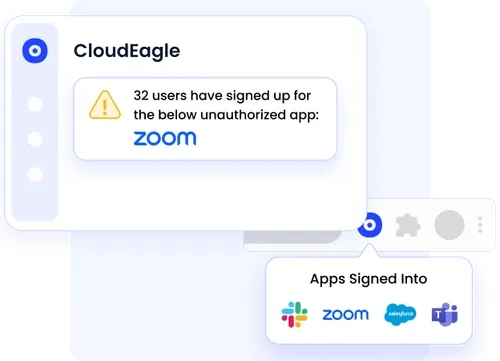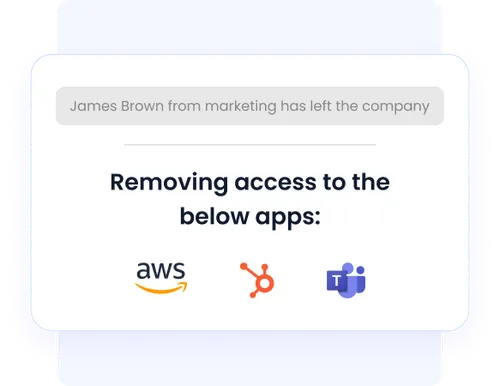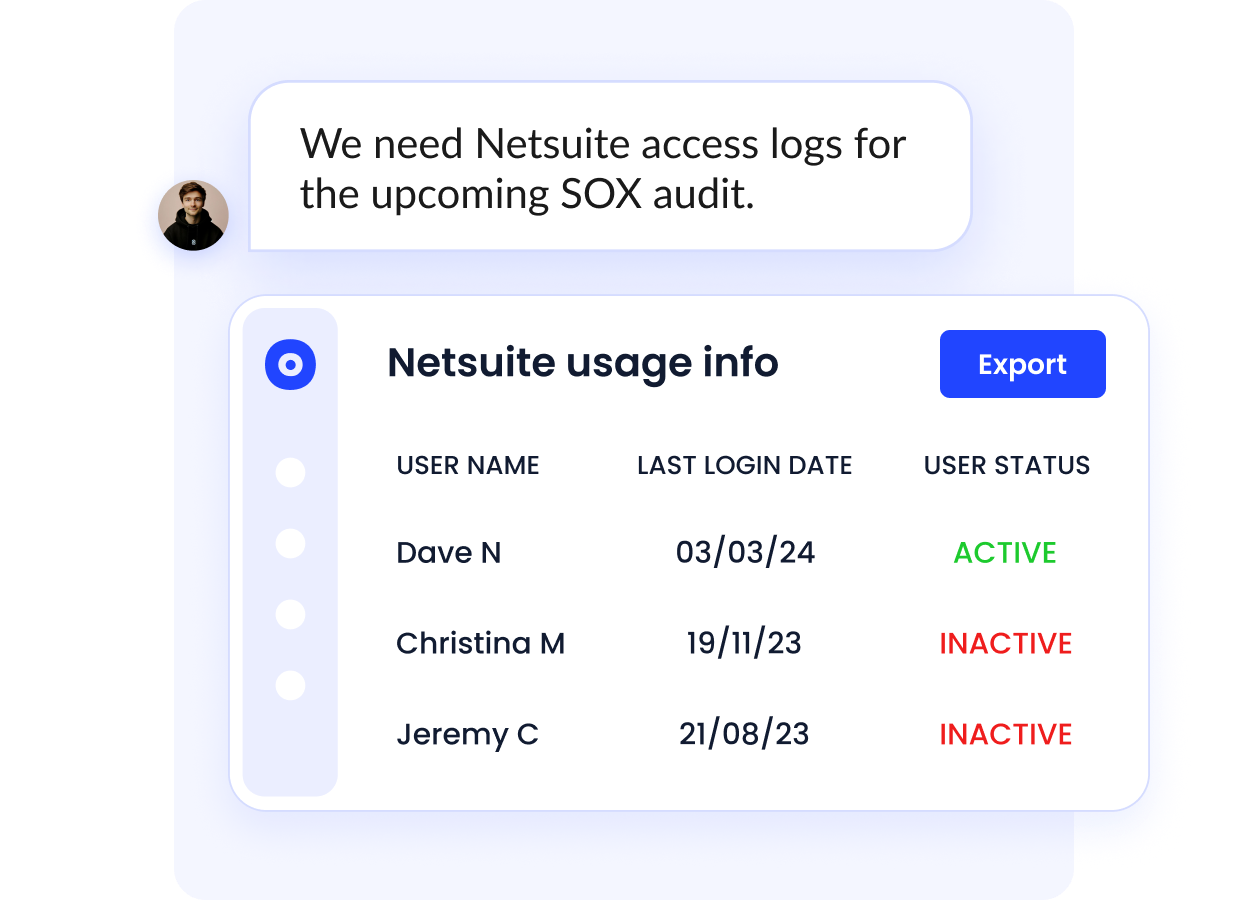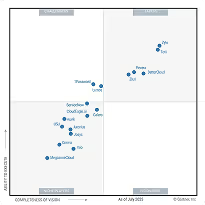HIPAA Compliance Checklist for 2025

Managing IT assets without clear measurement is like flying blind; According to Motadata, nearly 40% of IT budgets are wasted due to underutilized resources. Enterprises often invest heavily in software but lack visibility into whether these assets are driving value. That’s where ITAM KPIs step in to provide clarity.
Compliance is another pressing challenge, with companies facing millions in penalties each year for software license violations. By tracking IT Asset Management KPIs, organizations can stay audit-ready, minimize risk, and avoid costly surprises.
And when it comes to cost optimization, businesses can overspend up to 30% on IT assets due to inefficient lifecycle management.
Tracking the right asset management metrics ensures every laptop, server, and license delivers value. In this blog, we’ll explore the most impactful ITAM KPIs and how tools like CloudEagle.ai help businesses monitor, analyze, and optimize IT assets for maximum ROI.
TL;DR
- ITAM KPIs like asset utilization, license compliance, and TCO help measure IT asset efficiency and ROI.
- Tracking the right asset management metrics ensures cost savings, compliance, and reduced risks.
- Key KPIs include lifecycle costs, downtime frequency, warranty status, and software reclamation rates.
- Effective ITAM relies on centralized data, automated tracking, and benchmarking against standards.
- CloudEagle.ai simplifies KPI tracking with AI-driven insights, compliance-ready audit trails, and automated reporting.
What are ITAM KPIs?
ITAM KPIs are quantifiable measures used to evaluate the performance of an organization’s IT asset management program. Essentially, they help enterprises understand how well IT assets, both hardware and software, are managed throughout their lifecycle.
These KPIs often include metrics related to asset utilization, software license compliance, total cost of ownership, and more.
By tracking these IT Asset Management KPIs, IT leaders gain insights into inefficiencies, underutilized resources, and opportunities to reduce costs. They also provide the foundation for informed procurement, lifecycle management, and compliance reporting.
To make it clearer, here’s a table format:

ITAM KPIs provide a measurable framework to monitor the efficiency, compliance, and financial impact of IT assets.
Why ITAM KPIs Matter for Business Success
ITAM KPIs help businesses optimize costs, improve compliance, and maximize the value of IT assets. By tracking these key performance indicators, organizations gain visibility, reduce inefficiencies, and align technology investments with business goals.
Effective ITAM isn’t just about tracking devices or software; it’s about driving business value. ITAM KPIs ensure that enterprises can:
- Align IT spending with business priorities
- Optimize the use of software licenses
- Reduce unnecessary procurement costs
- Maintain compliance with regulatory standards
Measuring ROI of IT Assets
Return on investment (ROI) is a core ITAM KPI that evaluates the financial benefits derived from IT assets compared to their cost. Tracking ROI involves analyzing:
- Acquisition costs and total cost of ownership (TCO)
- Operational efficiency improvements
- Reduced downtime and maintenance expenses
For example, calculating ROI for software licenses ensures that purchased licenses are fully utilized, preventing overspending. Monitoring ROI also supports strategic IT planning and procurement decisions, aligning IT investments with business objectives.
Optimizing Software Utilization
One common challenge in ITAM is underutilized assets. Tracking asset utilization and usage metrics allows organizations to reclaim or redistribute IT resources effectively. Key areas to monitor include:
- Number of active software licenses
- Software usage patterns and license consumption
- Asset depreciation rate and utility
Regular monitoring helps organizations reduce unutilized assets, prevent unnecessary purchases, and optimize overall IT spend.
"Effective IT asset management is not just about tracking devices; it's about aligning technology investments with business outcomes."
- Phil Perfetti, Senior Vice President at Flexera.
Supporting Compliance and Audit Readiness
Non-compliance with software licensing and regulatory requirements can lead to hefty fines. KPIs such as license compliance rate and software license compliance metrics help ensure adherence to internal policies and legal obligations.
By tracking these KPIs, IT teams can:
- Maintain up-to-date license inventories
- Schedule audits proactively
- Reduce risk of penalties
A 2023 study by the Business Software Alliance found that 37% of software installations in India are unlicensed, posing significant compliance risks.
Tools like CloudEagle.ai automate compliance tracking, providing valuable insights for audit readiness and ongoing governance.
Driving Cost Savings and Risk Reduction
Cost optimization is a major driver for ITAM. Monitoring total cost of ownership per asset, procurement expenses, and maintenance KPIs helps organizations:
- Identify high-cost assets
- Plan for timely upgrades or repairs
- Reduce downtime and operational disruptions
Research by APQC indicates that organizations with comprehensive TCO tracking reduce asset-related expenses by 15% annually.
Additionally, analyzing incident frequency and downtime metrics ensures that assets perform reliably, minimizing risks to business continuity.
Enhancing Strategic IT Planning
ITAM KPIs offer insights that guide long-term planning. By tracking lifecycle costs, asset utilization rates, and procurement KPIs, IT leaders can:
- Make informed decisions about future acquisitions
- Plan budget allocations more effectively
- Align IT resources with organizational growth
In essence, KPIs bridge the gap between operational IT management and strategic business objectives.
Top ITAM KPIs Enterprises Should Track
Enterprises should track ITAM KPIs like asset utilization, license compliance, inventory accuracy, TCO, MTBF, MTTR, and audit readiness to manage IT assets effectively, cut costs, maintain compliance, and boost efficiency and security.
According to a 2024 report by Flexera, 35% of IT assets are underutilized, leading to unnecessary costs.
Let’s explore the key IT Asset Management KPIs every organization should monitor for optimal performance.
1. Asset Utilization Rate
The asset utilization rate measures how effectively software assets are being used. Low utilization may indicate over-provisioning or underused resources, while high utilization reflects efficient resource allocation.
How to track:
- Compare the number of active assets vs. total assets
- Analyze usage patterns through monitoring tools
- Identify unutilized or underutilized assets for reclamation
2. License Compliance Rate
This KPI tracks compliance with software license agreements. Non-compliance can lead to fines and reputational damage.
How to track:
- Maintain a centralized inventory of software licenses
- Audit software installations and usage
- Calculate the percentage of licenses in compliance
3. Total Cost of Ownership (TCO) per Asset
TCO includes the full lifecycle cost of an asset, including purchase, maintenance, upgrades, and disposal. Monitoring the total cost of ownership helps organizations manage expenses and improve ROI.
How to track:
- Add acquisition, maintenance, and operational costs
- Include depreciation and repair expenses
- Compare TCO across similar asset types
4. Software Reclamation Rate
Software reclamation measures the proportion of unused or underutilized software licenses that can be reclaimed.
How to track:
- Identify idle licenses using usage metrics
- Reassign licenses to active users
- Optimize software procurement to avoid unnecessary purchases
Also, Organizations can reclaim 10–20% of unused software licenses annually, according to a 2023 Flexera study, saving on unnecessary renewals.
5. IT Asset Lifecycle Costs
Tracking costs at each stage of an asset’s lifecycle, from acquisition to retirement, helps IT teams optimize procurement and maintenance decisions.
How to track:
- Monitor costs associated with deployment, maintenance, and disposal
- Include repair, upgrade, and downtime expenses
- Evaluate ROI per lifecycle stage
6. Incident and Downtime Frequency
Frequent incidents and downtime reduce productivity and increase IT support costs. Tracking these metrics ensures proactive management.
How to track:
- Record incident frequency and mean time to repair (MTTR)
- Identify assets prone to failure
- Plan preventive maintenance schedules
7. Percentage of Assets With Expired Warranties
Expired warranties can lead to high repair costs and unplanned expenses. This KPI tracks assets nearing or past warranty expiration.
How to track:
- Maintain a warranty inventory
- Monitor expiration dates
- Plan upgrades or renewals proactively
A 2022 Spiceworks report found that 25% of enterprise hardware assets operate with expired warranties, increasing repair costs and unplanned downtime.
How to Measure and Analyze ITAM Metrics Effectively
Measure ITAM metrics by aligning them with business goals, automating asset tracking, and auditing for accuracy. Track KPIs like TCO, utilization, compliance, and MTBF with dashboards, then use insights to refine processes and improve outcomes.
Measuring ITAM KPIs requires accurate data, centralized monitoring, and actionable insights. Here’s how organizations can track and analyze their IT Asset Management KPIs efficiently:
Centralizing ITAM Data Collection
A centralized ITAM database or CMDB ensures all IT assets are recorded, categorized, and tracked consistently. This helps maintain accurate IT inventory and asset management metrics. Benefits include:
- Eliminates discrepancies and errors in ITAM KPIs
- Provides a single source of truth for software licenses
- Improves monitoring of asset utilization and lifecycle costs
Leveraging ITAM Dashboards and Reports
Visual dashboards simplify tracking of asset management performance metrics and provide insights into IT asset usage. They allow stakeholders to:
- Monitor key performance indicators in real-time
- Identify trends in software assets
- Highlight unutilized or underperforming IT assets
Automating KPI Tracking With Tools
Manual tracking can be slow and error-prone. Using a tool like CloudEagle.ai for ITAM ensures that KPIs are automatically tracked. Key advantages include:
- Continuous monitoring of IT asset utilization and software license compliance
- Automatic alerts for expired warranties, repairs, and downtime incidents
- Reduced administrative workload and improved asset management efficiency
Benchmarking Against Industry Standards
Comparing your ITAM metrics against industry standards allows enterprises to optimize asset management KPIs. This involves:
- Evaluating asset utilization rates against best practices
- Monitoring the total cost of ownership (TCO) per asset for budgeting accuracy
- Setting realistic goals for procurement, repairs, and software license usage
Turning Data Into Actionable Insights
Collecting ITAM KPIs is just the first step. Analyzing the data helps organizations make smarter decisions about IT assets:
- Reallocating or reclaiming underutilized assets
- Planning procurement or upgrades for high-demand resources
- Optimizing software license distribution to reduce compliance risk
- Ensuring audit readiness and supporting ITAM performance metrics
What Challenges Do Businesses Face in Tracking ITAM KPIs?
Tracking ITAM KPIs is challenging due to incomplete data, inconsistent processes, poor tool integration, limited automation, and employee resistance. These gaps reduce visibility across the asset lifecycle, making it harder to ensure compliance, control costs, and manage assets strategically.
Tracking ITAM KPIs comes with several hurdles that can impact accuracy and decision-making:
- Inaccurate Asset Inventory: Missing or outdated records of IT assets, including software, make it hard to measure utilization, TCO, or asset depreciation reliably.
- Inconsistent KPI Definitions: Teams may track asset utilization or license compliance differently, leading to misaligned reporting across stakeholders.
- Manual Processes: Spreadsheets and manual tracking can introduce errors, inflate costs, and hide unutilized assets.
- Shadow IT: Unauthorized software or hidden IT assets distort asset management performance metrics and increase compliance risk.
- Linking KPIs to Business Goals: Without connecting metrics to ROI, cost savings, or compliance, ITAM efforts may lack measurable business impact.
Why Do You Need CloudEagle.ai for ITAM?
Managing IT assets, especially SaaS, is complex. Traditional tools and spreadsheets don’t provide the visibility or automation needed for effective IT Asset Management (ITAM). CloudEagle.ai is designed to solve these challenges, providing IT, security, and procurement teams with a centralized platform to govern, optimize, and save on their SaaS usage.
Here’s why CloudEagle is essential for your ITAM strategy:
Achieve Full Visibility Across Your SaaS Ecosystem
Tracking multiple apps and licenses across various departments is no easy task. Without a centralized solution, companies risk overspending and losing control over their tech stack.

CloudEagle’s Solution:
Get 100% application visibility, licenses, and spending from a single platform. CloudEagle’s centralized dashboard makes managing and optimizing your SaaS environment effortless.
Save 10-30% on SaaS Spend with AI-Powered Insights
Wasted spend on unused licenses and overlapping tools is common, but often goes unnoticed until it’s too late.
CloudEagle’s Solution:
CloudEagle’s AI-driven analytics identify unused or redundant software, allowing you to eliminate waste and optimize your licenses. Customers typically save 10-30% on their software spend.
Prevent Shadow IT and Improve Security
With 60% of SaaS apps running outside IT’s visibility, shadow IT creates significant security and compliance risks.

CloudEagle’s Solution:
CloudEagle helps you discover and govern all apps, including those not sanctioned by IT. Protect your organization from security gaps and ensure full compliance by controlling all app usage.
Automate Access Management and Improve Efficiency
Manual processes for onboarding, offboarding, and access reviews lead to inefficiency and security risks.

CloudEagle’s Solution:
Automate onboarding and offboarding, ensuring employees have the right access, at the right time, and that security is always up to date. CloudEagle’s automated workflows reduce manual effort and improve operational efficiency.
Simplify Compliance with Continuous Access Reviews
Conducting access reviews manually is time-consuming and prone to errors, which could lead to compliance issues.

CloudEagle’s Solution:
With CloudEagle, continuous access reviews are automated, saving your team 80% of the time spent on compliance preparation and ensuring your organization is always audit-ready.
Leverage Data-Backed Insights to Optimize Your ITAM Strategy
Without actionable data on software usage, it’s tough to make smart procurement and renewal decisions.

CloudEagle’s Solution:
CloudEagle’s AI delivers powerful insights into SaaS usage, helping you make informed decisions about renewals, budgeting, and vendor negotiations.
Know how CloudEagle.ai helped Remediant track app usage, licenses, and spend data.
To Sum Up
Measuring the right ITAM KPIs is critical for maximizing ROI, ensuring compliance, and cutting costs across your IT ecosystem. From asset utilization to license compliance and total cost of ownership, these asset management metrics provide the foundation for smarter decision-making.
When businesses consistently measure and act on IT asset management KPIs, they gain valuable insights into software licenses and lifecycle costs. This not only improves efficiency but also minimizes risks, unutilized assets, and unnecessary expenses.
CloudEagle.ai helps organizations achieve this with automated KPI tracking, usage insights, and compliance-ready audit trails. By centralizing data and simplifying reporting, CloudEagle empowers IT teams to make faster, data-backed decisions.
Book a free demo with CloudEagle.ai to turn your IT assets into measurable business value.
Frequently Asked Questions
- What are the three main deliverables of ITAM?
Accurate asset inventory, optimized lifecycle management, and compliance with licensing and security standards. - What are the 5 key performance indicators examples?
Asset utilization rate, license compliance rate, total cost of ownership, mean time to repair (MTTR), and downtime frequency. - What are the 5 P's of asset management?
Planning, People, Processes, Performance, and Portfolio, key elements to ensure assets deliver maximum value. - What are good KPIs for IT department?
System uptime, incident response time, asset utilization, software license compliance, and IT cost per user. - What are the four main KPIs?
Financial performance, customer satisfaction, internal process efficiency, and employee/innovation growth.

%201.svg)









.avif)




.avif)
.avif)




.png)









